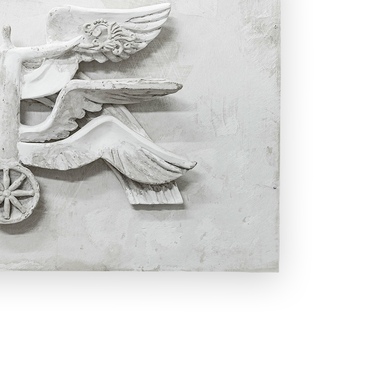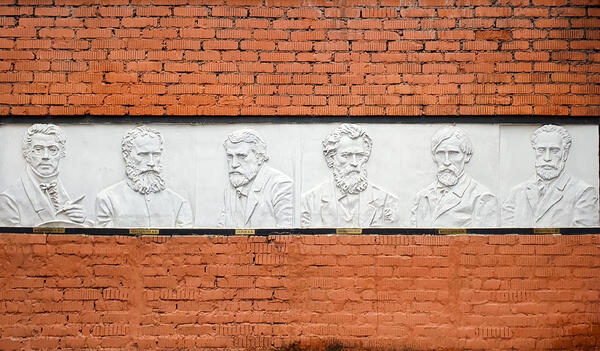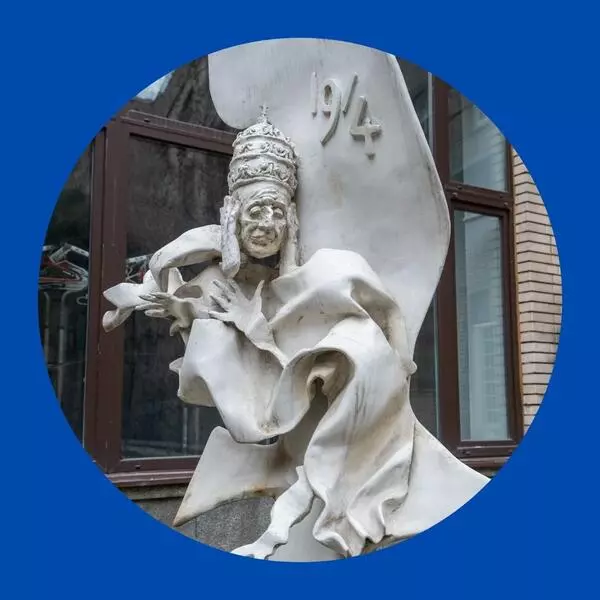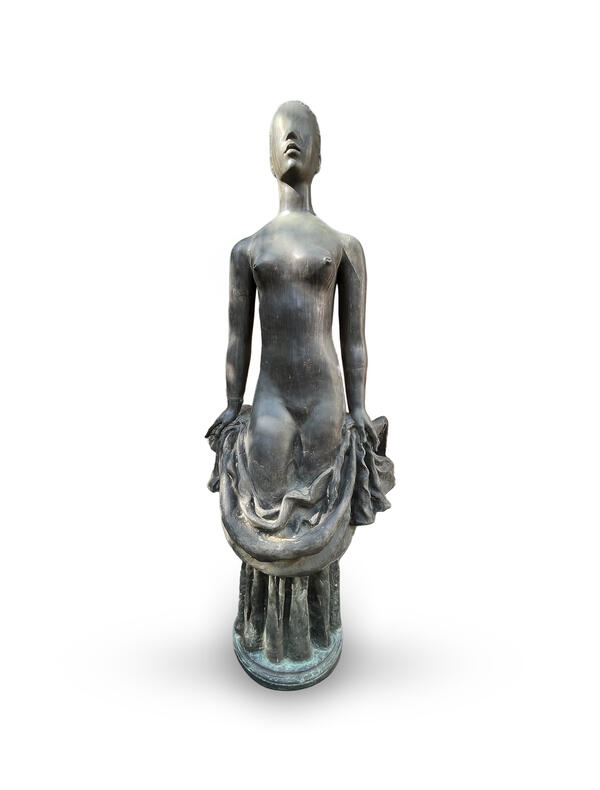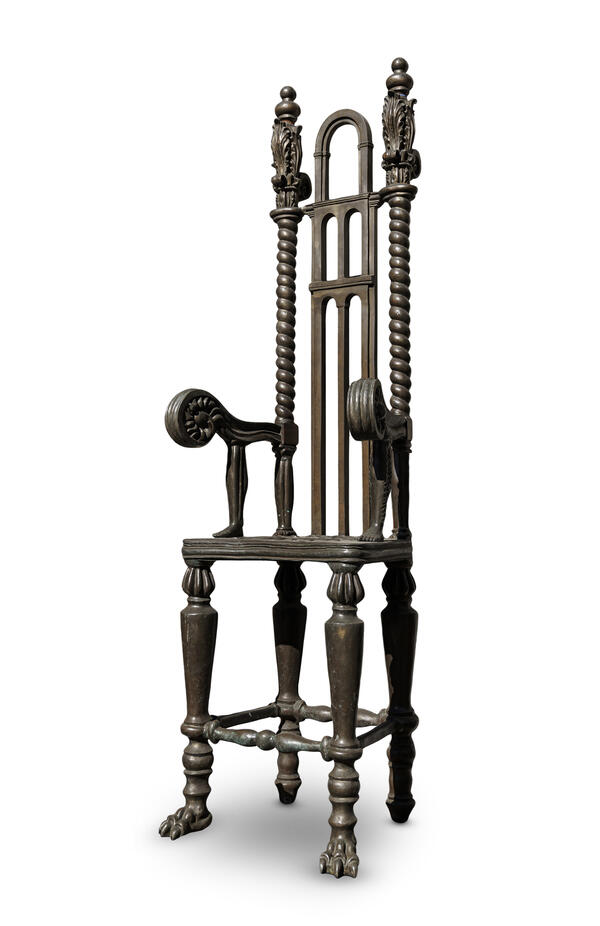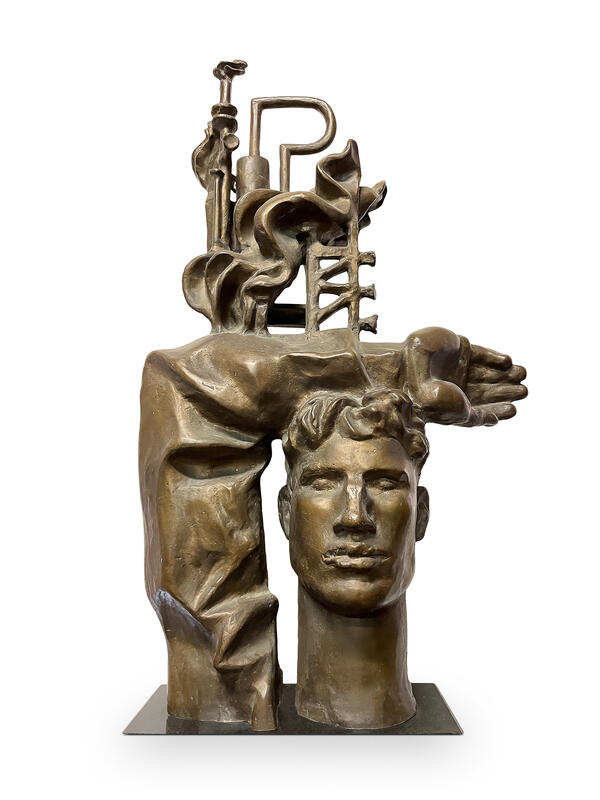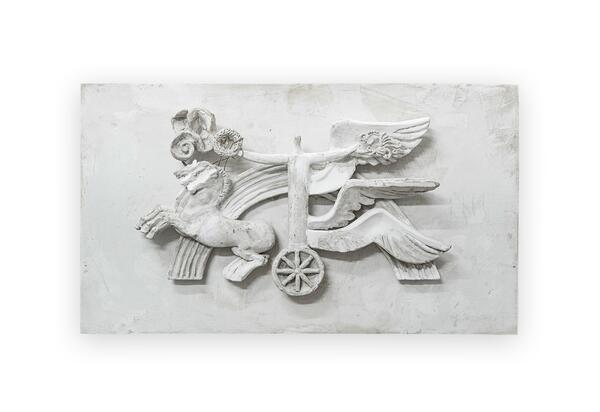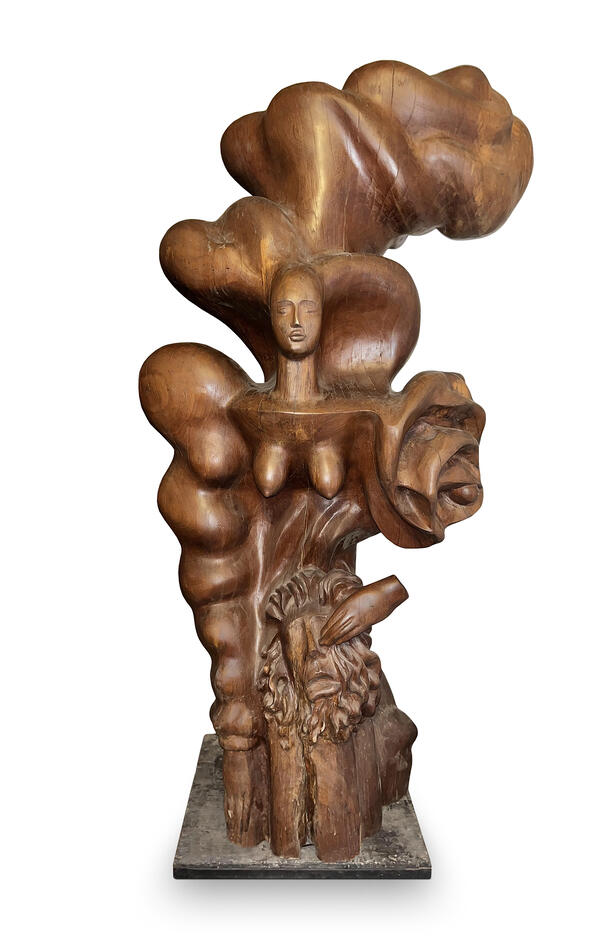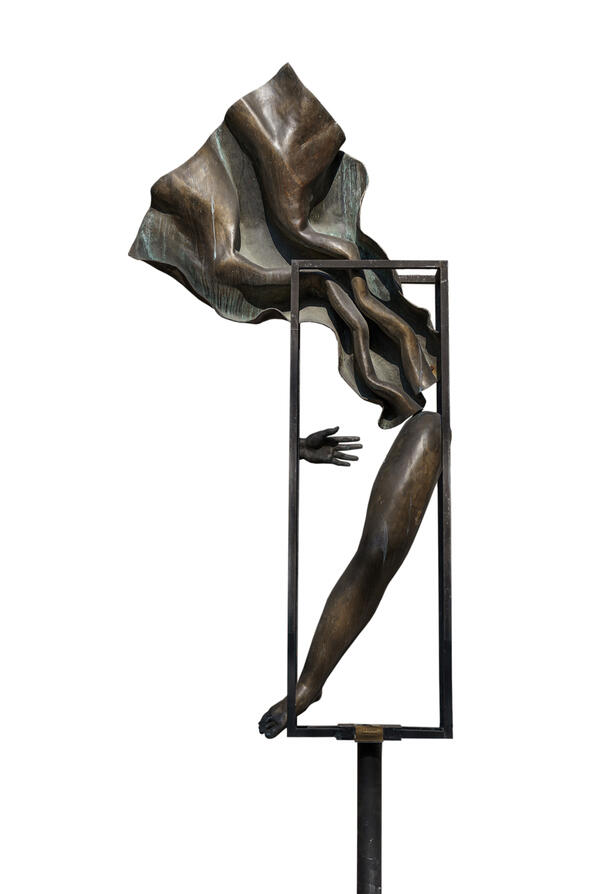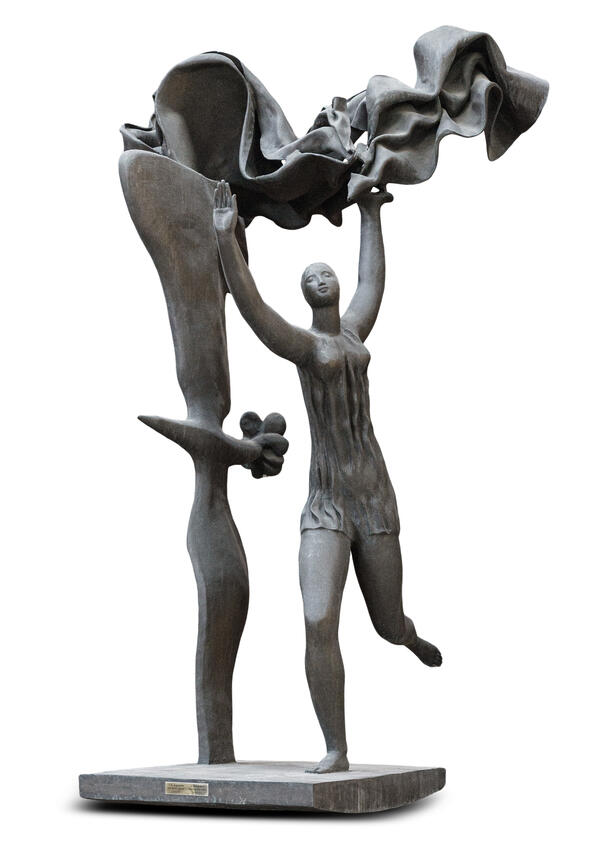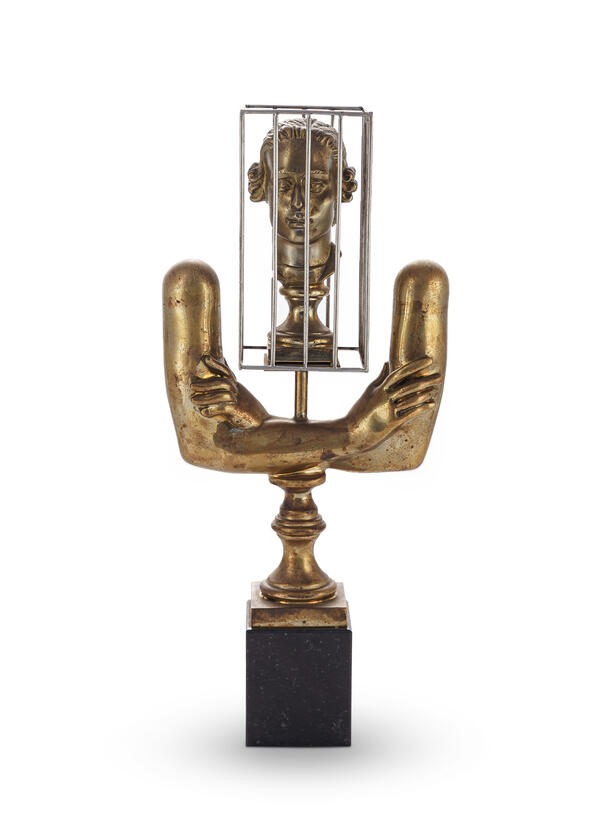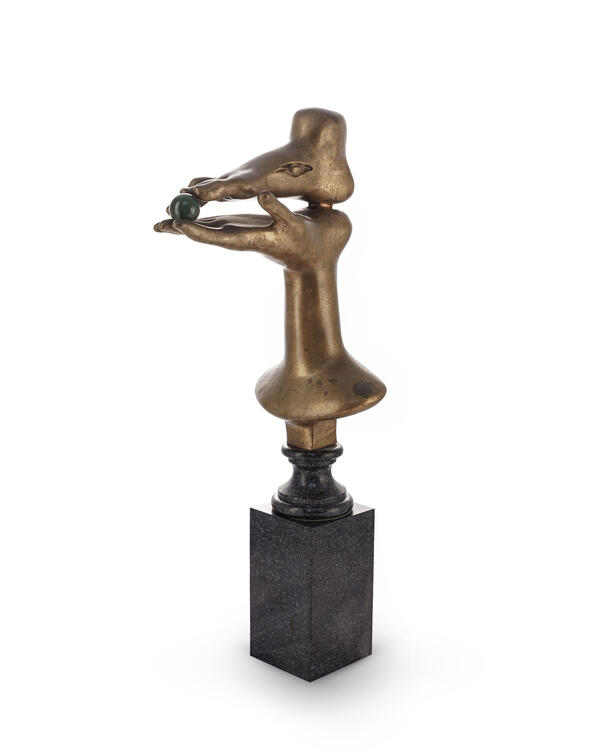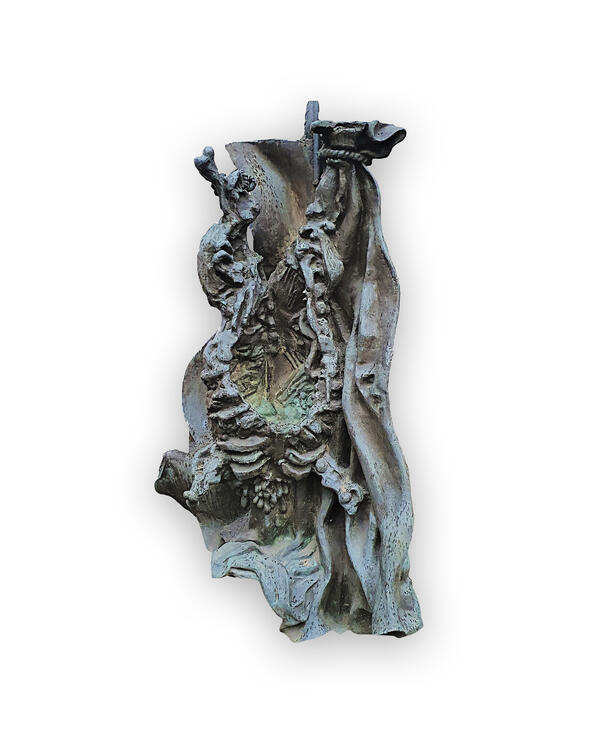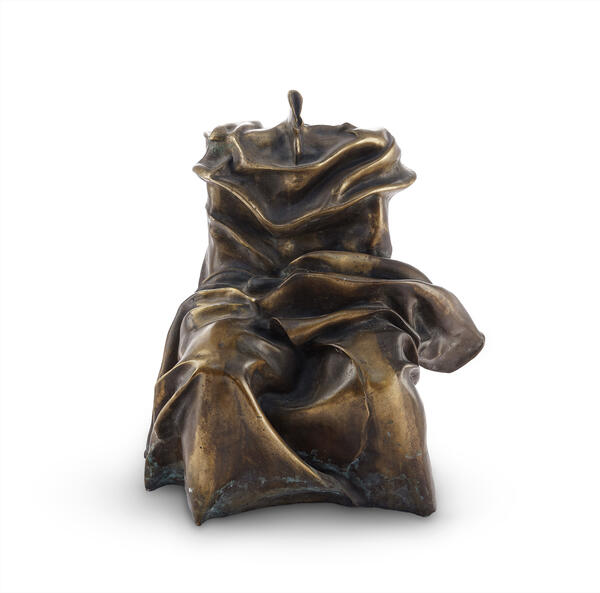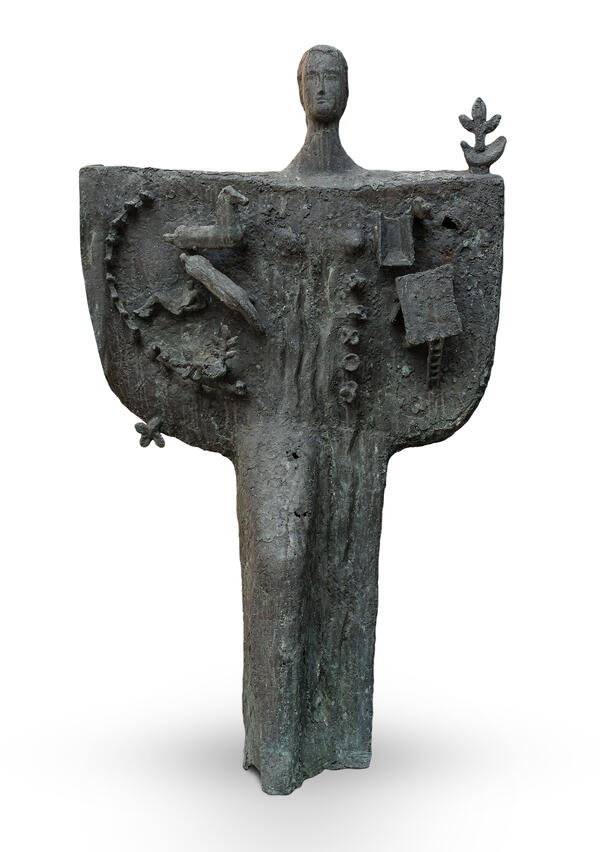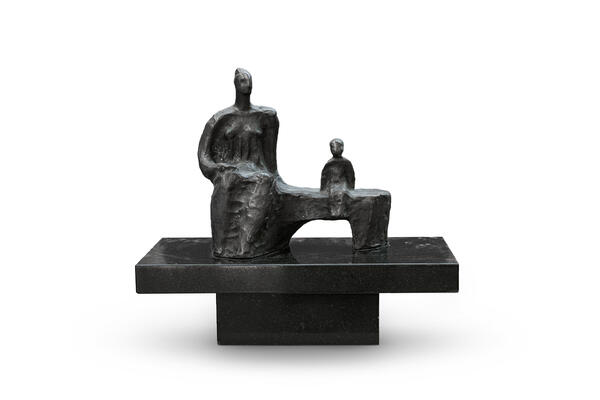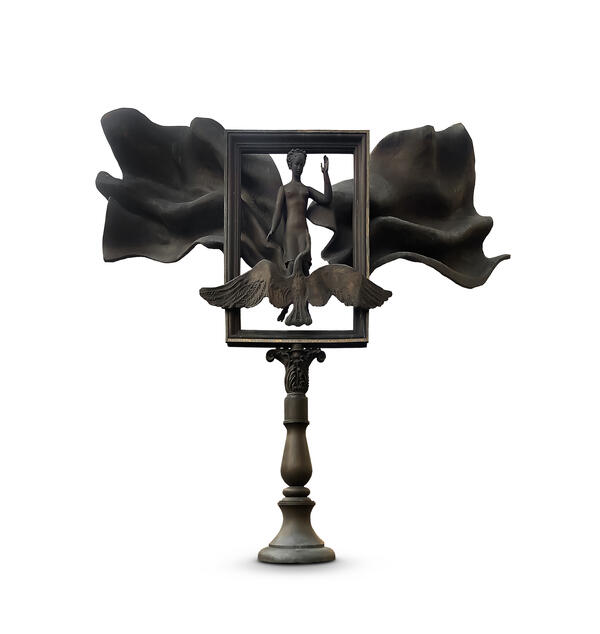Alexander Nikolayevich Burganov not only created the sculptural and graphic works that are displayed in the museum but also redesigned the building itself. For the Burganov House, he created an expressive artistic environment — a synthesis of sculpture and architecture. A visitor feels like entering a theater where the entire museum becomes scenery for the artworks. The space is designed in such a way that visitors can view the sculptures from different angles and perspectives. Some are placed high above, like the floating outstretched arms above the museum, while others are closer to visitors.
In this unusual environment, attention is drawn to the Pegasus Gallery and the composition “Flight of Pegasus” installed in its windows. The composition is filled with real and surreal motifs, metaphors and allusions, engaging the visitor in an intellectual dialogue. Fragments of a larger composition are placed in the gallery’s windows, like quotations or parts of a single story. This is one of Burganov’s favorite artistic devices. Each visitor can interpret the composition for themselves: a wheel fragment may represent a road or a chariot, fluttering drapery may symbolize movement, speed, or flight, the head of Apollo represents patronage of the arts, while the images of muses embody inspiration.
Preparing a perfect environment and creating myths through architectural and sculptural means are absolutely essential for Alexander Burganov’s sculptures. Each work is integrated into the architecture to such an extent that it creates a completely new composition and idea.
The sculptor transforms a façade with a relief composition into an independent artwork that can be freely interpreted by the viewer, while at the same time reflecting the original idea.
The windows of the gallery, which was once an ordinary apartment building, could have simply preserved traces of its former life, but in the reimagined space of the museum, they became part of an artwork, combining the relief into a coherent story.
Architecture serves the sculptures in the building.
It is inseparable from them. Together, they form a single artistic space,
composition, and concept.

